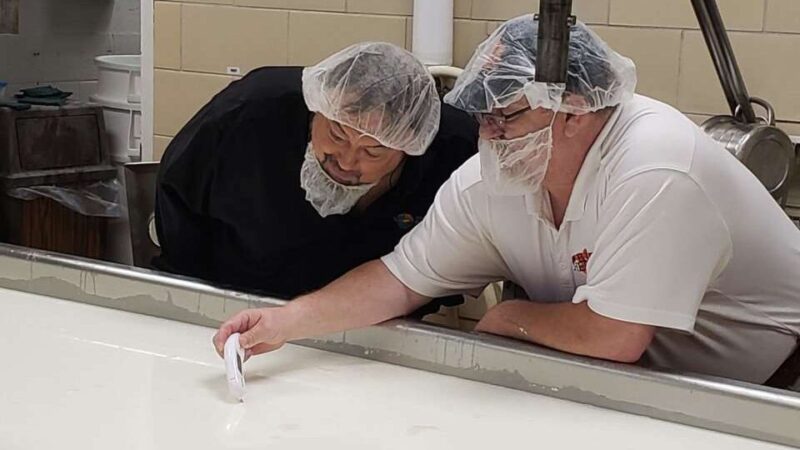Making Clemson U’s World-Famous Blue Cheese On National TV
Legendary Program Heads To The Airwaves
CLEMSON, SC — It’s a few minutes before 4 o’clock. In the morning. The sky has yet to be interrupted by so much as a hint of dawn. Cheese Maker Anthony Pounders already stands tapping his toe, holding the door to the Clemson University blue cheese lab open as a TV crew begins to unload gear and haul it inside, growing a little more antsy with each trip back and forth to the parking lot.
“We’ve got to hurry,” Pounders instructs. “We’ve got a schedule to keep and the cheese won’t wait.”
Apparently, cheese wakes up early. Very early. And when it’s cheese like this – the tangy, velvety, award-winning blue cheese the university has made and sold since 1940 – the extra effort is worth it, groggy TV crew aside.
Inside the department, down a maze of halls and storage rooms, the cheese-making room awaits. There’s already a vat filled with hundreds of gallons of premium, unhomogenized milk, delivered and pumped in last night from Hickory Hill Milk in nearby Edgefield. The heating process begins; Pounders carefully monitors the temperature and prepares to start adding ingredients. Cheese has a very tight schedule – any deviation from nature’s timeline results in a large tub of… well, something that’s not cheese.
The sleepy TV crew sets up and begins to film as Pounders bustles about in the early processes of the cheese-making, adding rennet and other key ingredients at just the right temperature, turning on a set of paddles that will stir constantly to keep the vat from setting up like glue.
At about 4:30 a.m., Chip Carter, host of the RFD-TV Network’s popular primetime series Where The Food Comes From joins Pounders on-camera. The host rubs tired eyes one more time, careful not to disturb the makeup applied earlier to conceal bags from a short-sleep night, and goes to work.
There’s a reason Clemson blue cheese wakes up so early. The student staff helping Pounders with his mission of the last three decades prefers the early hours so they don’t interfere with class schedules. As he wraps up the early stages of the process and the vat slowly turns into something actually resembling cheese, they begin to arrive.
Pounders steps aside to deal with his other business of the day and his apprentice, Asst. Cheesemaker Crosby Jack Sackett, takes over. From there, it’s a blur of activity. Sackett and Carter grab large paddles, looking for all the world like plastic boar oars, and begin a long process of constantly stirring and scraping the vat to prevent clumps of curds from forming, occasionally reaching in with gloved hands to break up larger clumps. The automated stirring paddles are removed so the cheese can begin to set.
Pounders reappears to pass judgement. It’s a thumbs up. Immediately, the vat hydraulically tips to drain the liquid whey. The room explodes into motion. Trays are wheeled in holding rows of what look like big coffee cans shotgunned with holes. These are the molds the fresh, wet curds will be pressed into to take shape. One student grabs a large plastic shovel and starts furiously scooping onto a waiting processing table as the others grab heaping handfuls and pack molds as fast as possible, pressing down as they go to help the remaining whey drain.
They’ll drain for some time. The staff goes on to other projects, slicing and packaging already made cheese and packing boxes for shipment across the country. Later, they’ll return to unmold the finish product, wrap it, and take it down the hall to the frigid cheese cave where it will age for several months. Then it’s off to class.
Clemson blue cheese has become a decades-long calling for Pounders now.
“I’m just a dairyman who grew up down the road milking cows,” he says. “I started helping out years and years ago and eventually they asked me to take over the whole process. I’ve been here ever since – and there’s really not much I would change.”
Where The Food Comes From travels the country telling stories of food and farming, based on creator, host and producer Chip Carter’s many years in the media.
“It was a gas to get in there and actually help make the cheese. I’m really glad I didn’t mess anything up,” Carter says. “What made it all the more fun is that in the previous episode, we featured the robotic dairy Hickory Hill, where all that great milk comes from. We filmed on consecutive days, so you’re actually seeing the whole process as it happens.”




